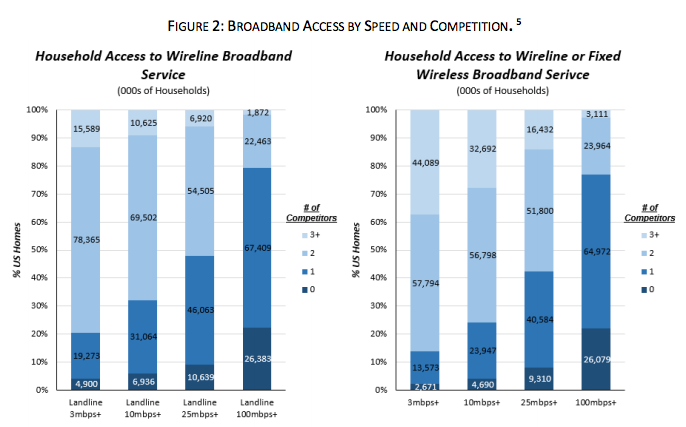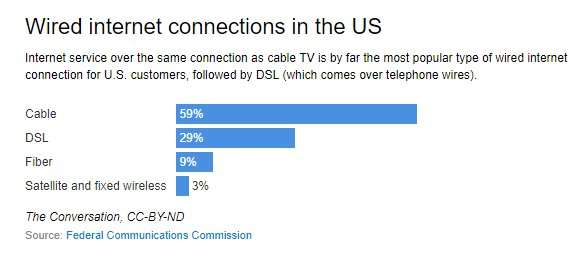One often hears it said that “only 50 percent of U.S. households have a choice of more than one broadband provider.” It is not true, unless you consider all the qualifications, such as eliminating wireless and mobile access platforms, and using definitions of "broadband" that, while accurate, are not necessarily "true."
In other words, if a user has 20 Mbps access--not "broadband"-- does that mean end user experience is not substantially the same as if that user had 25 Mbps?







In other words, if a user has 20 Mbps access--not "broadband"-- does that mean end user experience is not substantially the same as if that user had 25 Mbps?
What people mean when saying such things is that certain percentages of homes only have one provider of “fixed network” internet access service at particular speeds, as virtually every U.S. home has a choice of two satellite providers, in addition to fixed service, plus mobile access from three to four suppliers, and in rural areas, quite often a fixed wireless supplier.
In fact, though we might argue that the speeds and prices are not optimal, most U.S. households probably have choices for internet access ranging from five to seven, at a variety of speeds, from a variety of platforms.
To make the argument that half of U.S. household only have one broadband provider, one has to eliminate available mobile options, satellite providers and service below certain thresholds, be that 4 Mbps, 10 Mbps, 25 Mbps or any other number.
In 2016, some 92 percent of the population has access to both fixed terrestrial services at 25 Mbps/3 Mbps and mobile LTE at speeds of 5 Mbps/1 Mbps, the FCC said in 2018, using 2016 data.
That almost certainly means access and speeds have gotten better over the last couple of years.
In rural areas, 68.6 percent of Americans have access to both services (fixed at 25 Mbps, mobile at 5 Mbps or better), as opposed to 97.9 percent of Americans in urban areas.
With respect to fixed 25 Mbps/3 Mbps and 10 Mbps/3 Mbps LTE services, 85.3 percent of all Americans have access to such services, including 61 percent in evaluated rural areas and 89.8 percent in evaluated urban areas, the FCC says.
At year-end 2016, 92.3 percent of all Americans had access to fixed terrestrial broadband at speeds of 25 Mbps/3 Mbps, up from 89.4 percent in 2014 and 81.2 percent in 2012.
It was true that, in 2016, perhaps 24 million Americans still lack fixed terrestrial broadband at speeds of 25 Mbps/3 Mbps from at least one provider. But that is not the same as saying those households do not have internet access at 10 Mbps or faster, from multiple non-wired suppliers.
The point is, everything hinges on the definition of “broadband” and the range of suppliers who sell it in any given market.
Most of the “one provider markets arguably are in rural areas.
As you would guess, most of the problems exist in rural areas.

No comments:
Post a Comment